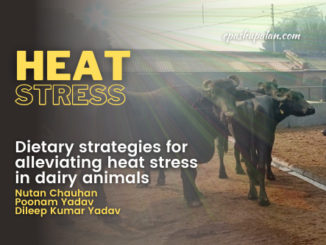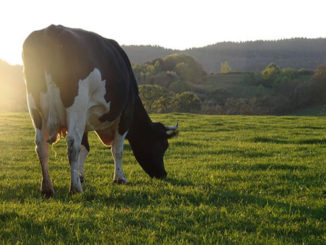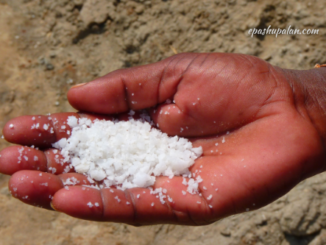The development of green fodder throughout the year does not only involve the production or cultivation of high yielding fodder types, but also includes maintaining a balance between succulent fodder and dry fodder, protein-rich and energy-rich quality fodder, dry and condensed, fresh fodder and silage, as well as to maintain the quality and superiority of all these. As per the 20th livestock census, the total livestock population is 535.78 million in India, with an increase of 4.6 per cent over the previous census in 2012 and the bovine population consisting of cattle, buffalo, mithun, and yak is 302.79 million. Hence there is higher requirement for fodder production in order to supply the same to huge stock.
The availability of feed and fodder remains a major area of concern since there is a gap between its demand and supply in the country. The field under fodder cultivation is confined to roughly 4% of the area under cultivation and has remained stagnant for the last four decades. As per the estimates of the ICAR- National Institute of Animal Nutrition and Physiology (NIANP), the deficit in the requirement and the availability of dry fodder, green fodder and concentrates during 2015 was to the extent of 21 per cent, 26 per cent, and 34 per cent, respectively. It was further reported that the deficit is likely to increase to 23 per cent, 40 per cent, and 38 per cent, respectively, by 2025.
This scarcity is due to increased land demand for the production of food grains, oilseeds, pulses and insufficient attention to the production of fodder crops. Many a times, false expectations, assumptions and improper planning related to fodder production and its yield yields often lead to low fodder productivity that cause shortages or even high fodder yields that makes the green fodder to spoil or becomes a wastage. Planning of fodder production year round with concern to quality and yield is very essential in order to avoid such circumstances of fodder scarcity due to low yield or wastage of fodder due to higher yield than requirements and improper facility for conservation or storage. To avoid scarcity of fodder it is advisable to plan for storage of fodder well in advance before any emergency situation.
Fodder production in a year depends on the climate, cropping pattern, type and number of livestock, fodder requirement of livestock and socio-economic condition. By increasing productivity or utilizing untapped feed resources, fodder deficit may be met. Animal’s productivity is enhanced by providing balanced good quality fodder. The fodder is the cheapest source of animal feed and so it is necessary to enhance fodder proportion in animal’s diet. The quantity of forage varies according to animal status such as maintenance, pregnancy and lactation. As fodder production depends on the requirement of livestock, following is the fodder requirement calculation for dairy animals.
Requirement of Fodder for Adult Animal (Cattle or Buffalo)
An Adult animal requires minimum 10% of green fodder of its body weight. Then a cattle weighing 400 kg requires 40 kg green fodder. Feeding of sole Monocotyledons fodder or Dicotyledonous fodder causes imbalance in livestock. Hence balancing of green fodder as per the thumb rule- 2/3rd of the green fodder out of 40kg green fodder, i.e., 30 kg should be monocotyledons & 1/3rd i.e., 10 kg should be dicotyledonous fodder.
Examples of Monocotyledon fodder: Maize, Jowar, Bajra, Oat, Hybrid napier, Guniea grass, Para grass, Rhodes grass and Anjan Grass etc.
Examples of Dicotyledon fodder: Lucerne, Berseem, Cow pea, Guar, Stylo and Subabaul (Tree fodder)
Monocotyledons or Dicotyledons are also differentiated based on their duration or growth as
- Perennial fodder: Fodder crop survives for more than a year
Perennial Monocotyledons: Hybrid napier, Guniea grass, Para grass, Rhodes grass, Anjan Grass etc.
Perennial Dicotyledons: Lucerne, Stylo, Subabaul, Dashrath etc. - Seasonal fodder- Fodder crop survives for a season (Monsoon, Winter, Summer) in a year like:
Seasonal Monocotyledons: Fodder Maize, Fodder Jowar, Fodder Bajra, Oat, etc.
Seasonal Dicotyledons: Berseem, Cow pea, Guar, etc.
Thus, for planning fodder production throughout the year, both kind of fodder crops classification i.e., Seasonal/ Perennial & Monocotyledons/ Dicotyledons are very essential.
As calculated above, adult animal weighing 400 kg body weight requires 40 kg green fodder daily for consumption, so for a year, requirement for one animal is = 365 × 40=14,600 kg or 14.6 MT= 15 MT
From one acre (40R), per year 45 to 50 MT fodder will be produced, so 3 adult animals will be managed from 1 acre of green fodder produced. For planning of balanced (Monocotyledons & Dicotyledons) fodder throughout the year under irrigated condition, following planning is required:
MODEL 1
- Lucerne grown in area of 10 R, yields 10 -12.5 MT /year fodder that may be supplied to 3 adult animals @ 10 kg/day/year.
- Hybrid Napier grown in area of 10 R, yields 10-12.5 MT /year- fodder supplied for 3 adult animals @ 10 kg/day/year
On remaining 20 R area
- During kharif, fodder sorghum grown in 20 R area yields 6-8 MT and in rabi fodder maize grown in 20R area yields 10 MT while, in summer, fodder sorghum grown in 20R area yields 7 MT.
- This fodder altogether may be supplied to 3 adult animals @ 25 kg per day (for 3 adult animals for 365 days requires 27.5 MT).
From this model, one adult animal (400 kg) will receive 10 kg lucerne, 10 kg hybrid napier & 25 kg green maize/sorghum means 10+10+25= 45 kg green fodder throughout the year.
Lucerne fodder crop yield /year = 10-12.5 MT
Hybrid Napier fodder crop yield/year = 10-12.5 MT
Kharif green fodder sorghum yield/year = 6 MT
Rabi green fodder maize yield/year = 10 MT
Summer green fodder sorghum yield/year =7 MT
TOTAL = 43 to 50 MT
This means, from one year fodder production, three adult animals can sufficiently be fed for a year. After three years, fodder area of hybrid napier and hucerne can be interchanged. It will have good effect on new crop of hybrid napier from stored nitrogen of previous lucerne crop.
*R=Are (1Acre=40are)






Be the first to comment